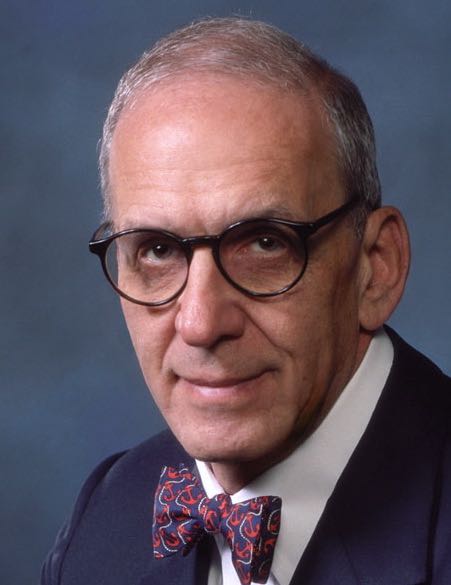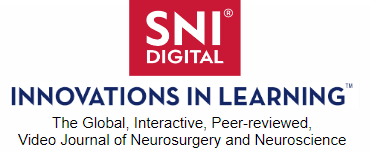0:00
Hello, I'm Jim Osmond, the creator and editor in chief of SNI Digital, the video journal of neurosurgery and neuroscience.
0:12
I'd like to give you an introduction to all of the features of version 5 of SNI Digital so you can get the most out of the website
0:23
The one address of SNI Digital is
0:28
snidigitalorg. Now what you see is the home page of SNI Digital Innovations and Learning. On the home page you can see here where I'm outlining with the cursor is the main video on the home page and
0:45
on the right hand side are the latest five videos that have been added to the website.
0:53
Now one thing you can find on the on the right hand side is it tells you the length of each program. Here it says 50 minutes. and you can get an idea, another one's 50 minutes. So the next thing
1:05
you wanna do is you wanna go and select the language 'cause once you select the language, that determines the language for all the programs. So let's say we're gonna select French and you can see
1:19
that the whole website and this includes the summary underneath the main video and all the titles of the other videos are all in French And if we wanna look at the printout of the audio, that's in
1:35
French. That gives you an opportunity to see this in different languages, both in audio and video. Now, if you pick a video, here's a video and it's still in French. Yes, I see. Searching
1:50
around in French. Your caption is coming out of the text. You're in the journal, you know, it's not. So the subtitles are the closed captions you'll be able to read.
2:02
in the language of your choice so when you go up here and it's in French and you want to quit you go up here where it says options you click X and it goes back to the regular into the regular language
2:15
now when we look at the video on the main page you can see the main video in the icon here that says that you want to start the video okay let's a little choose another one just for a second here and
2:30
this is a new video and you see the summary listed under here now in English it's really an abstract we didn't call it an abstract if you want to print it out for your computer you go print it out
2:41
here on the bottom of the main video on the home page is a rating system this we're using for the audience so we get alt metrics and you can rate it one two three four
2:57
stars for four out of five or five stars out of five. On the on the right hand side is a podcast sign and if I click on the podcast sign what you'll see is the podcast for SNI digital. This is just
3:14
the audio portion which you can fix up or set up in your in your smartphone or computer and you go play it and put on your earphones and so forth and do multi-tasking and this is what you do right
3:30
here. If you want to get an actual podcast I'll tell you about that in a few minutes we have also all of these programs on the the formal commercial podcast. Next to this icon here is another one
3:47
that says download video. If you click on that it'll go right here you saw it go right up there. Here it is that video is downloaded to your computer. So you can go home, you can take it and
4:02
whatever you want and you have time, you can look at it. So that, I think, takes you through those items. Now, if we want to show you the printout, this printout, now I turned it back to
4:14
English, is all in English. And if you want to have that for your record, you go up here and you click on print and it'll take you to your printer and it can print it out. So you have many
4:26
different options here. If you want to play the video, you put on, as you know,
4:33
I'm searching for a minute and you can go over here, obviously make it full screen. So those are some options you have there. Now I'd like you to
4:44
look at the search strategy we have. Up here on the top are three separate icons. The first icon here on the right, just lists all the videos we have on the website. So it's a long list, but you
4:58
can go down and scan through it and say, I'm interested in that or I'm not interested in that. We put this together so people who want this can have that choice. You could see there are 10 videos
5:09
on a page. There's 118 pages. It's 180 videos by this scanning, okay? The next one is another way to demonstrate the videos for your benefit And this is we put them in a row of five. And you can
5:24
see we have a small title underneath each video. And if you hover over the video, there's a little longer title than white, white print that comes out about what that video is about. So you don't
5:37
have to spend a lot of time. You can spend a few minutes and you can find out what each of these videos is about. It's like, now you can scroll down here. Here's a video we have on fetal
5:48
neurosurgery So there's a whole section on pediatric neurosurgery. We have an interview with Mitch Berger. So we have interviews with leaders in neuroscience. And then there's a series of videos we
6:02
have here, which are pediatric neurosurgery from Latin America. And these are neurosurgery 101 series from UCLA, a whole series of videos that comes out of UCLA. And here is a series of videos we
6:18
have of people doing research in the laboratory and making their short presentations with people asking them questions about it. So there's a lot of information here. And that's what you do. Now
6:31
the last way, you can go up to the red here and you always go back to the home page. The last method is search strategy. Now you can enter a name in here and I'll just enter
6:44
AVM, let's put that. And then you click the button search here the videos in which AVMs are mentioned. Now what you usually do is it should reset it all so it starts over. And you want to see,
6:58
let's say, another category. Let's say you want to look over here on
7:04
brain tumors. Well, now there's a lot of categories here. You can go into there and pick out the different category of brain tumor you want to see. Okay, we'll reset that. And this is like
7:16
looking through an index in a book And so I want to go and show you this because we also have someone other thing. And that's a video series.
7:26
And here's the video series. We have Dr. Blalock reports, Glasgow neural series. That's from young people presenting the research paper, hernostemic video series. And I'll show you another way
7:38
to get to that. Spine series and so forth. When you're finished, it's best to put, like the reset button because it clears it and clears the now one other thing here is to know is the menu this is
7:52
the menu which tells you various selections you can see the board members we have here and here it just shows you the people are on the board it gives you instructions for people who want to submit a
8:04
paper what's the background of SI digital here's some statistics of what the journal is doing and this is a
8:15
video series this is where you can see the hernostemic operative video series here I'll click on this and you can see there's 1200 videos there from professor Herman hernostemic on on all kinds of
8:28
subjects basically he's he's talked about now if you have questions about this you can click the icon here down in the lower corner and you can report a problem that you might have or want to feature
8:41
you want us to invite certain people. or you want to contact us and write to us, do this, and it'll go right to our email, and we'll answer you with that. Now, the last thing I want to talk to
8:51
you about is podcasts. I made this simpler for you. This is an Apple podcast. And here you put in SNI digital. And you can see there's some results here that come out. These are some programs
9:05
that they've selected here. And then there's a list of programs listed under here But if you want the entire list, you click on this. And it takes you down to where you can see all the videos that
9:18
they have on the podcast. It's all not filled up yet. But this goes basically in chronological order. You can go through this, listen to it, just like you listen to the podcast as all the
9:29
advantages that you want with it.
9:33
SNIdigitalorg
9:35
is in version 50 It's seen in 149
9:40
countries around the world.
9:43
It has over 35, 000 viewers projected in the next 12 months. It's peer reviewed with all of its content being peer reviewed. It can be translated into 13 languages. There are 236 video programs on
10:00
multiple topics. And it's presents in video, audio, translation of audio, print out of the audio and the abstractor summary underneath the main video.
10:18
It is also present as a podcast on Apple, Amazon, and Spotify. And upgrades are made continuously.
10:30
I want to thank you for watching SI Digital and hope you will get a lot out of this video journal in the future.


